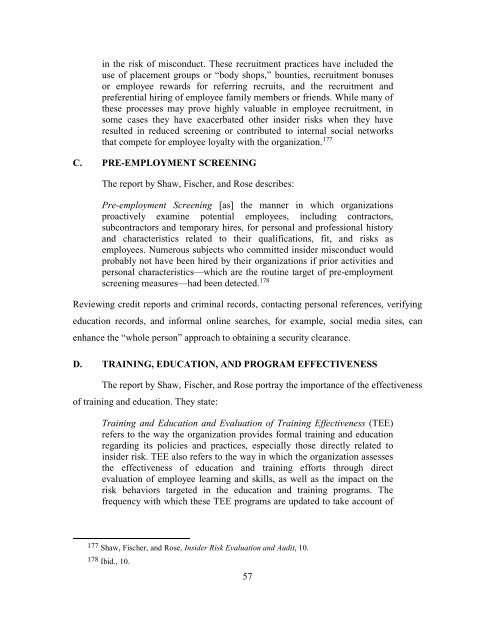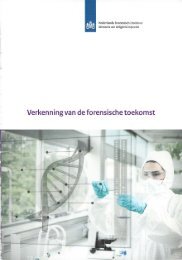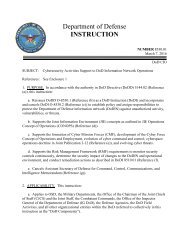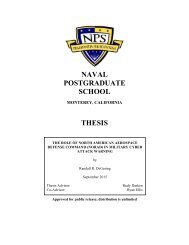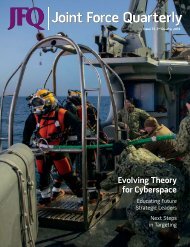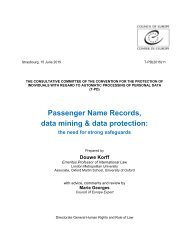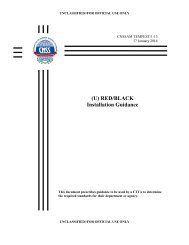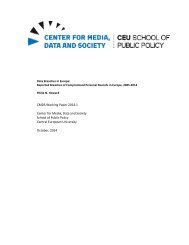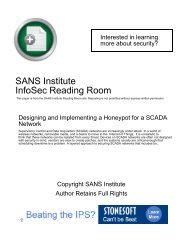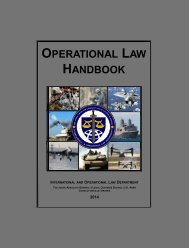SCHOOL THESIS
?view&did=768625
?view&did=768625
You also want an ePaper? Increase the reach of your titles
YUMPU automatically turns print PDFs into web optimized ePapers that Google loves.
in the risk of misconduct. These recruitment practices have included the<br />
use of placement groups or “body shops,” bounties, recruitment bonuses<br />
or employee rewards for referring recruits, and the recruitment and<br />
preferential hiring of employee family members or friends. While many of<br />
these processes may prove highly valuable in employee recruitment, in<br />
some cases they have exacerbated other insider risks when they have<br />
resulted in reduced screening or contributed to internal social networks<br />
that compete for employee loyalty with the organization. 177<br />
C. PRE-EMPLOYMENT SCREENING<br />
The report by Shaw, Fischer, and Rose describes:<br />
Pre-employment Screening [as] the manner in which organizations<br />
proactively examine potential employees, including contractors,<br />
subcontractors and temporary hires, for personal and professional history<br />
and characteristics related to their qualifications, fit, and risks as<br />
employees. Numerous subjects who committed insider misconduct would<br />
probably not have been hired by their organizations if prior activities and<br />
personal characteristics—which are the routine target of pre-employment<br />
screening measures—had been detected. 178<br />
Reviewing credit reports and criminal records, contacting personal references, verifying<br />
education records, and informal online searches, for example, social media sites, can<br />
enhance the “whole person” approach to obtaining a security clearance.<br />
D. TRAINING, EDUCATION, AND PROGRAM EFFECTIVENESS<br />
The report by Shaw, Fischer, and Rose portray the importance of the effectiveness<br />
of training and education. They state:<br />
Training and Education and Evaluation of Training Effectiveness (TEE)<br />
refers to the way the organization provides formal training and education<br />
regarding its policies and practices, especially those directly related to<br />
insider risk. TEE also refers to the way in which the organization assesses<br />
the effectiveness of education and training efforts through direct<br />
evaluation of employee learning and skills, as well as the impact on the<br />
risk behaviors targeted in the education and training programs. The<br />
frequency with which these TEE programs are updated to take account of<br />
177 Shaw, Fischer, and Rose, Insider Risk Evaluation and Audit, 10.<br />
178 Ibid., 10.<br />
57


